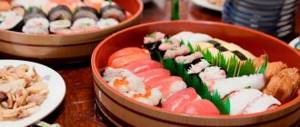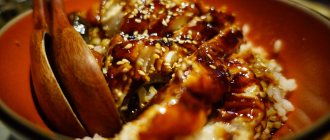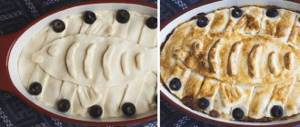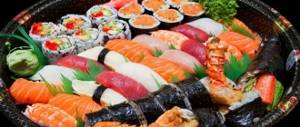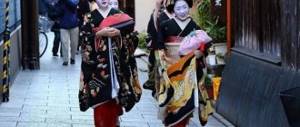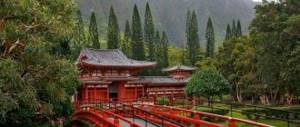Japanese cuisine is not limited to sushi and battered shrimp. The country boasts a variety of unique dishes. Did you know that the Japanese do not use forks and table knives, like to combine salty with sweet, and do not use shelf-stable foods? Read our article for everything you wanted to know about the national cuisine of the Land of the Rising Sun and even more.
Features of Japanese cooking
This national cuisine is undoubtedly one of the most exotic. It is radically different from the European one - in etiquette, serving, and products used.
The main features of Japanese cuisine are:
- eating seasonal food;
- unique table etiquette;
- the use of umami, the taste of protein products, as a base when preparing dishes;
- widespread use of seafood, and a wide variety of them;
- specific serving with an emphasis on the aesthetic appearance of food and the table as a whole;
- small portions. There is a preference for more dishes rather than a single serving size;
- the Japanese do not consume canned or shelf-stable foods, with the exception of rice and various sauces;
- the predominant use of fresh products, during the preparation of which the Japanese try to preserve their original appearance;
- unique cutlery – chopsticks. Some dishes are eaten with hands; spoons are very rarely used. That is why dishes are served in small slices to make it easier to grab with chopsticks;
- lack of forks and knives in serving.
Tea ceremony
Japanese men and women love different drinks, coffee, but they have a special relationship with tea. Many Asians set up special places for the ceremony - tea gardens and houses. The dishes should form a single artistic composition. Etiquette requires that all utensils match each other and that no item stands out. For the tea ceremony you need the following utensils:
- Tabyako is a box for storing tea. Made from wood.
- A tjama cauldron or a tetsubin kettle—water is boiled in them. The material of manufacture is copper or cast iron.
- Chawan is a common cup from which all guests drink. Made from Raku ceramics, it is characterized by rough workmanship and lack of decoration.
- Bowls for each guest.
- Chashaku is a bamboo spoon for pouring tea.
- Chasen is a whisk used to stir tea during preparation. Made from bamboo.
The “aged” look of the utensils is an element of the aesthetics of the Japanese tea ceremony. The whole procedure is an art. The main thing in the sacrament is preparing and drinking thick matcha green tea powder. The brewing process takes place in complete silence. People around watch the actions of the owner, listen to the sounds of fire, boiling water, and the clatter of dishes. Proportions are determined by eye. The owner needs to put dry tea into the chawan, then pour a small amount of boiling water over it. After stirring, the mass becomes homogeneous, covered with green matte foam. Then more boiling water is added to the chavan.
All guests take turns drinking from a common cup - this symbolizes the unity of those gathered. Then the host prepares light hot tea for everyone gathered, and the conversation begins. Before drinking tea, sweets are served - wagashi and hagashi. When the conversation ends, the owner apologizes and leaves the ceremony site, but does not go far. This is a sign that the tea party is over. When the guests go home, the host spends some time at the ceremony site, reliving the recent events.
Rice dishes
Rice in Japan is one of the pillars on which the national cuisine is based. Mostly cereals are used, which are highly sticky. This is necessary so that the rice, after heat treatment, forms small lumps that are convenient to pick up with chopsticks.
Rice is prepared as an independent dish and also serves as the basis for various recipes. This cereal goes well with seafood, vegetables, and herbs.
Onigiri
These are rice balls served with various sauces. The name of the dish comes from the word “nigiru”, which means “to compress” in Japanese, which clearly indicates the process of preparing the dish.
Warm, boiled unleavened rice is carefully shaped into plump triangles, often wrapped in dried seaweed nori. There are onigiri with filling, as well as spherical shapes.
Sushi
The dish became widespread in other countries in the 1980s. According to Japanese transcription, it is correct to say "sushi", but throughout the world the pronunciation as "sushi" has taken root. For the dish I use:
- special small-grain Japanese sumeshi rice, also called “vinegar rice”;
- dried seaweed leaves or nori;
- fish, only ocean varieties, because they are less likely to contain parasites. Salmon and tuna fillets can only be used after deep freezing;
- pickled vegetables (most often daikon, ginger);
- wasabi (a special type of horseradish);
- soy sauce;
- rice vinegar.
Sushi can be of various shapes - thin, large, twisted, pressed, etc.
sake
In Russia it is difficult to taste sake; neither the climate, nor the environment, nor the combination with food is conducive to this, so you need to drink sake in Japan. This drink tastes like white wine, but with a more complex and rich aroma. Sake can be fruity and sweet or dry, so it’s best to rely on local recommendations first. You should look for the most authentic sake bars not in Tokyo, but in Kyoto - and it was in one of these rather unsightly-looking sake bars that I had my most delicious dinner in Kyoto.
Sake production has come a long way in the last 30 years, reducing the off-flavors that sake was traditionally served hot to mask. Today, high-quality sake (one of the indicators of the quality of a drink is the degree of polishing of the rice) is not heated, but cooled, and drunk from small thimbles, pouring sake from a bottle or from glasses. If you order a glass of sake, it will be brought in a small saucer and poured heapingly. You must first lean towards the glass, sip the sake and pour the contents of the saucer into the glass.
Read on topic: Types of wine: how not to embarrass yourself and pass for an expert
Seafood
The peculiarity of Japanese national cuisine is that seafood is subject to minimal heat treatment. Shrimp, fish, and shellfish are steamed or lightly fried, and according to some recipes, seafood is used raw.
Sashimi
The dish is prepared from fish or seafood fillets. The most commonly used are salmon, tuna, shrimp, whale meat, octopus, squid, etc. The products are used raw.
The fillet is cut into small pieces and served with wasabi, soy sauce, shiso leaves and slices of daikon (a spicy rhizome).
Chinese food
Chinese cuisine, also known as Chinese cuisine, refers to a style of cooking in and around China.
Chinese cuisine has a rich and interesting historical background that dates back more than 1,000 years to various dynasties.
However, Chinese cuisine has changed over time and the main reason for this was to accommodate the different preferences of local people.
One of the most notable features of Chinese cuisine is that dairy products are rarely used.
Today we have about 8 recognized Chinese dishes, including:
- Anhui
- Cantonese
- Sichuan
- Fujian
- Hunan
- Jiangsu
- Zhejiang
- as well as Shandong
The main carbohydrates in Chinese cuisine are noodles and rice, as well as vegetables in all Chinese dishes. Chinese cuisine also uses different types of rice sauces and seasonings.
The most popular types of Chinese cuisine
Here is a list of the most popular Chinese dishes that most people are familiar with. Many of them are staples in Western Chinese restaurants not only in Asia. Who doesn't know delicious spring rolls?
- Hot pot
- noodles
- Rice dishes, especially fried rice
- Szechuan pork
- Braised pork balls with sauce
- Shrimp with vermicelli
- Dumplings
- Chow mein
- Peking duck
- Steamed buns
- Sweet and sour pork
- Chicken Kung Pao
- Rolls
- Wontons
Noodles
Noodle dishes are widespread in Japanese national cuisine. It is used as a side dish, as an ingredient in soups or salads. Most popular dishes:
- ramen - meat or vegetable broth with noodles, cooked in wheat flour, mineral water, with the addition of eggs);
- Soba – noodles made from buckwheat and wheat flour. It is served both cold and hot, boiled or fried, with vegetables or only in broth;
- Udon is a noodle that does not use eggs.
"Kurage." Jellyfish*
0
As a rule, jellyfish are first dried, since without water they quickly deteriorate. Before serving, it is soaked in water and sprinkled with vinegar. Some argue that eating jellyfish is the same as chewing rubber, while others compare it to boiled squid. By itself, it is tasteless, so the key to success lies solely in the sauce.
Meat dishes
The Japanese began to use beef and pork in cooking quite late. These ingredients were borrowed from Chinese and European cuisines. Most often, cooked meat is served in thin slices - no more than one mm wide.
Niku-zaga
This is a kind of stew - meat stewed with potatoes, vegetables and spices. The Japanese are more familiar with seafood dishes, so this borrowed dish is not particularly popular in the country.
"Kujira." Whale meat
0
Despite the opinion of the international community, “in the name of science” the Japanese still continue the annual hunt for whales, whose meat is partly openly sold in local markets. And to everyone's surprise, this is one of the generally accepted dishes in educational institutions, but it is not very common in restaurants. You might think that whale meat is amazing given the amount of outrage against whaling, but let me tell you, it tastes a little bland. Therefore, in the school canteen it is often deep-fried.
Soybeans
This type of legume is a product brought from China. But despite this, soy has taken root well in Japanese national cuisine. A wide variety of dishes, sauces and cheeses are prepared from it, for example:
- soy milk - this can be a puree from soaked beans or a decoction of previously fried soybeans;
- Natto is fermented soybeans that have a stickiness and a specific odor. A very popular breakfast option in Japan;
- tofu is a cheese made from soy milk. The product is known for its nutritional value and high protein content;
- edamame - boiled young beans with pods;
- Yuba – foam when soy milk boils while preparing tofu;
- soy sauce - brine obtained by fermenting beans;
- miso - soybean paste. Used as a base ingredient for soups and sauces. The product is a sediment from soy brine.
A real delicacy - poisonous fish!
fugu fish dish is an unforgivable mistake. Locals love this fish very much, despite the fact that the dish can be deadly. Every year the Japanese eat over 2 thousand tons of poisonous fugu. A person just needs to touch its insides with his hand to receive a lethal dose of poison. If there is fugu on the restaurant menu, this indicates the presence of a high-class chef: strict requirements are put forward for the master who cooks fugu - he must study for two years at a special school, where they reveal the secrets and features of preparing such a dangerous fish. After school, chefs pass a difficult state exam. This dish is prepared as follows: the cook separates the fins with quick blows of a sharp and thin knife, after which he carefully removes the poisonous parts and removes the skin. The fillet is cut very thin, like a sheet of paper. This dish is not only tasty, but also very beautiful, since the chef creates real artistic landscapes on a plate of fish pieces. It is considered the highest skill when the chef leaves an exact dose of poison in the fish so that restaurant guests have a barely noticeable feeling of drug intoxication.
Puffer fish
Soups
Japanese cuisine has many recipes for first courses. Soups come with various ingredients - seaweed, seafood, noodles, meat, potatoes, etc.
Suimono
To prepare the soup you will need seafood, soy sauce, mushrooms (for example, muer, a black woody mushroom used in Asian cuisine, as well as shiitake mushrooms), vegetables, fish and seaweed.
Nabe
This soup has several cooking options - it is boiled with fish or meat (pork is often used). The basic ingredients are also Chinese cabbage, onions, carrots, garlic, sesame oil, etc.
Japanese cuisine is unique not only for its exotic dishes for Europeans, but also for its special food consumption traditions. For example, men can eat sushi with their hands, but women can only eat sushi with chopsticks.
Soups are served in bowls, which are usually raised to chest level. Leaning over soup on the table is not customary in Japan and is considered an undignified act.
What do the Japanese eat for dinner?
The Japanese eat dinner quite heavily. Standard dinner includes:
- Rice or noodles.
- Soup. The Japanese love soups very much. The most commonly prepared dishes are misoshira and suimono (clear soups). They can be fish, meat, vegetables. For most soups, all ingredients and broth are boiled separately and combined only before serving. It is noteworthy that the Japanese eat soups with chopsticks, first catching pieces of vegetables and meat. Then drink the broth directly from the cup.
- Meat or fish in any form.
- Vegetables that can be steamed.
- Pickled snacks - tsukemono.
- A dessert made from traditional Japanese sweets called wagashi. There are many varieties of wagashi. To prepare them, rice or legumes, sweet potatoes, gelatin, chestnuts, herbs and fruits are used. They have a specific taste and are absolutely different from European sweets.
- Green tea.
Of course, the Japanese menu depends on personal preferences and family customs.
The article talks about what the Japanese usually eat for breakfast, lunch and dinner, what dishes are most popular and what products are used to prepare them. Some traditions associated with eating are also described.
Magic sesame
Sesame (or sesame) in most countries is used only in the form of sesame oil. Sesame itself is also in demand in Japanese cuisine. Here the roasted seeds are mixed with salt to make gomasio seasoning. Whole grains are used in various dishes (in small quantities).
So, for example, for lean chicken or vegetable salad, white sesame can be used, but for sweet potatoes (satsumaimo) - black (unpeeled). In the photo, tuna meat, lightly fried and “wrapped” in sesame seeds. As for oil, it is also actively used in cooking. It is fried, included in sauces and marinades, and added to salad dressings. It has a very pleasant and unique aroma; you just need to add it in moderate quantities.
Wagashi
Traditional Japanese desserts, although they have not escaped Western influence, still retain their taste and appearance. The main ingredient in the production of wagashi is anko, a sweet mass made from red beans.
By European standards, Japanese wagashi desserts are not too sweet, but still tasty. Some wagashi, with their grace, even resemble works of art.
Read on topic: Fig dessert with honey and rosemary
yellowtail
This white fish is considered a delicacy. Buri (yellowtail) is highly valued in Japanese cuisine and is even specially grown. This wonderful fish has a surprisingly delicate taste, soft meat and is suitable for making sushi and sashimi.
That's all about Japanese cooking for today. Thank you for reading my articles. I recommend subscribing to updates to keep up with new publications. It would be great if you share my news on social networks. All the best and delicious food!
Lika Raido
Yakitori
Yakitori is chicken skewers on bamboo skewers, but it's not that simple. There are different types of kebabs - from breast, different parts of legs, giblets, chicken skin, cartilage and so on, and their preparation, like everything in Japan, is subject to a complex and perfectly tuned system.
As corny as chicken skewers may sound, it was yakitori that we went to eat for dinner before leaving Tokyo, and that means something.
Read on topic: Chicken skewers recipe
